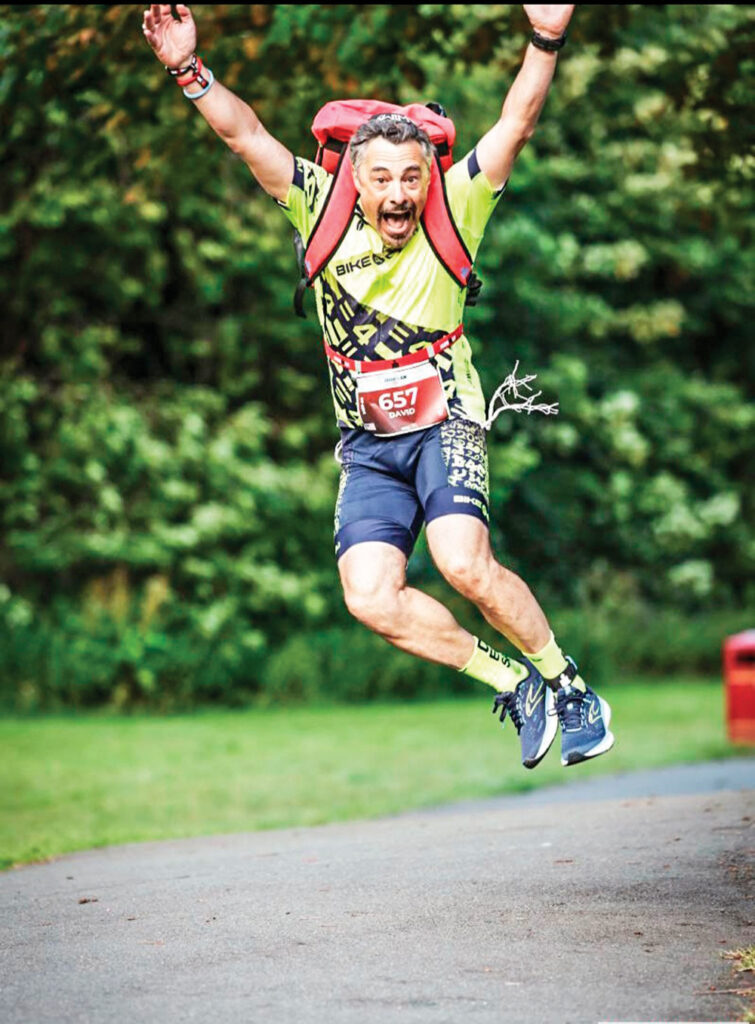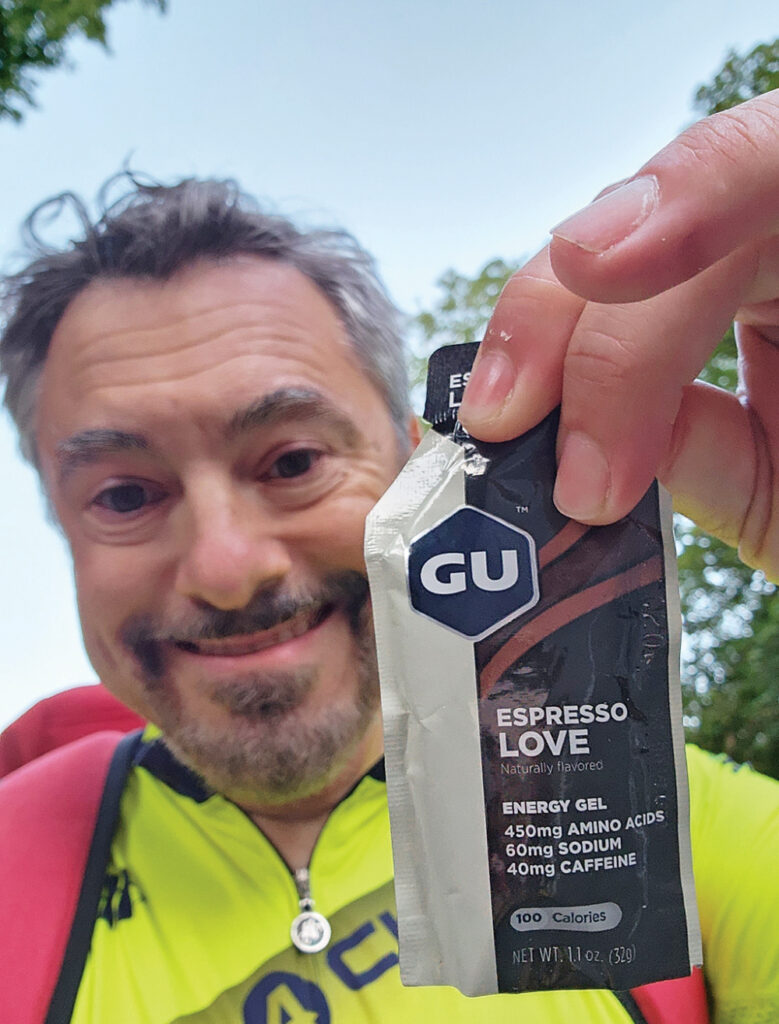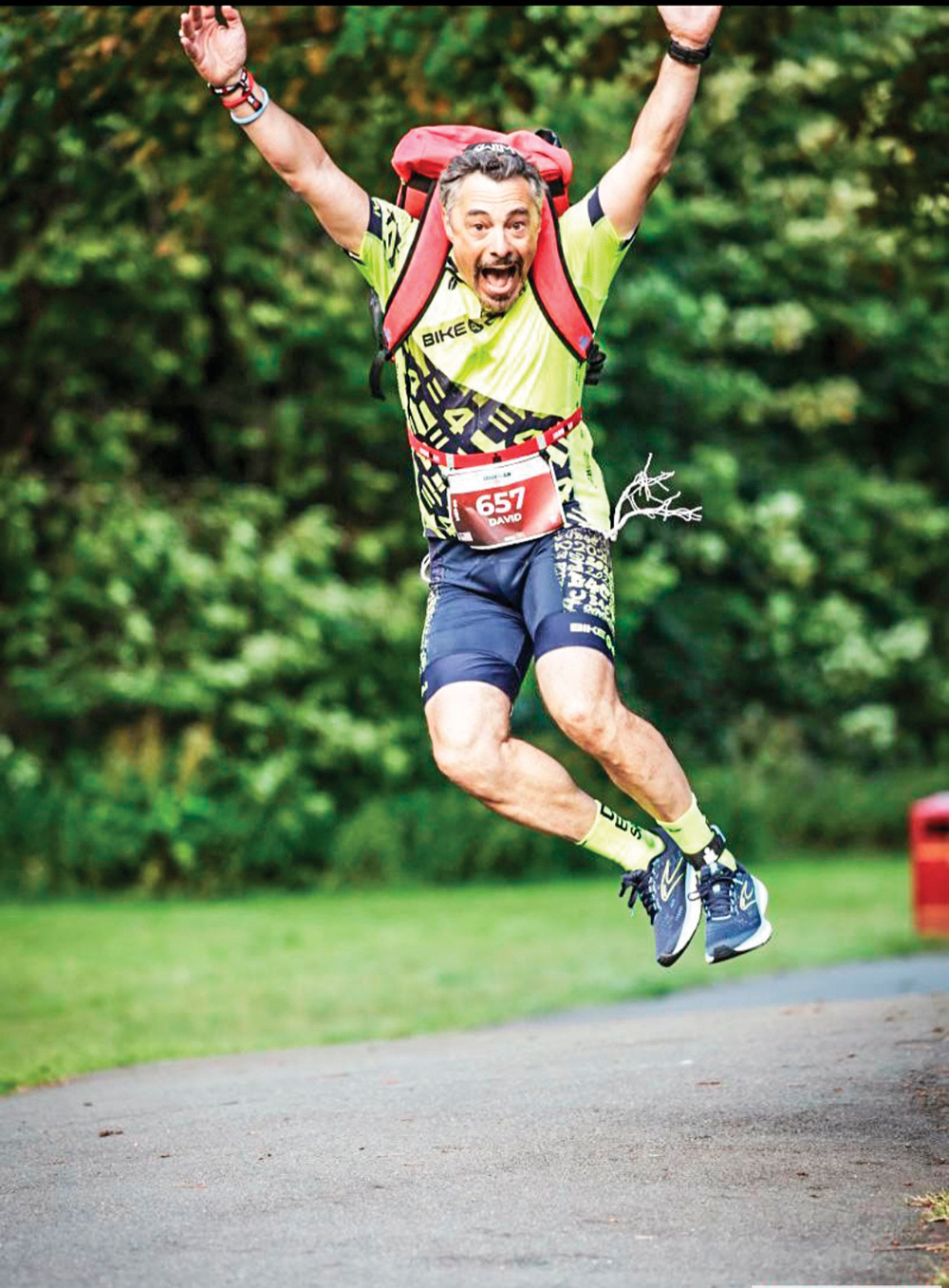
8:22:50 p.m. (+ 14:22:04 since race start)
Mile 18: I was now on the fourth loop. I reached the “horrible hill” and tried to power up the incline. I got halfway up… I had to walk. It was then that I noticed the drop in air temperature. Most triathlons take place in temperatures between 75 F and 90 F. Marathon runners are often aghast when I tell them this, but triathletes are used to it.
(You like running a marathon in 90 F weather?)
I said I was used to it; I didn’t say I liked it.
But I was running in Bolton, England, and it felt amazing in the 60 F air temp, even when I had to walk 10 feet. It felt so good that at the top of the “horrible hill” I just wanted to keep walking.
(So, what got you running again?)
I looked over my shoulder and I saw a runner gaining on me. I really wanted to just walk the rest of the way. It would have been easier than running, but with eight miles left to go, there was still a danger of running out of time. Nothing is guaranteed.
9:13:30 p.m. (+ 15:10:46 since race start)
Mile 20: It was time for another gel. I reached into my pocket and found one left. One more was all I was going to need to transverse this final 10K. Back in May, I had bought a variety pack of gels, so I couldn’t remember which flavors I packed.

(Credit: David Roher)
(All of them are good. It’s like a tube of frosting.)
I looked down at my hand; espresso love was the flavor I had drawn.
(Caffeine doesn’t give ADD/ADHD people like you more energy)
No, it gives us more focus. With 5.5 miles to go, that’s what I need right then. I treat every Ironman race like it is the last time I am going to do this, so I needed to focus and avoid making mistakes. You get one life to live, so make every day your best day.
9:24:30 p.m. (+ 15:21:46 since race start)
Mile 21: I was five miles from the finish line and I messaged my wife that I had one hour left.
I know that it is a 10-minute walk to the finish line from the hotel, but my father taught me that “early is on time and on time is late.” With enough advanced warning, my wife and kids could walk to the crowded finish without the fear of missing seeing me cross that finish line. When you rush, you forget things and when you arrive late, you don’t get a clear view of the finish line.
Little did I know how true that would be.
I didn’t wait for a response, I put the phone back in my pocket. I could see that final turn around in the distance.
Mile 22: I was at the turnaround for the fourth and final time.
The turnaround was much darker when I was here last year on the final turn.
(That’s because you were running faster and you arrived at an earlier time of night.)
Night? It’s 9:35 p.m. and the sun is just setting now.
(You were a little more north in the hemisphere than normal.)
On the first loop of the marathon, the turnaround is a busy pace, not unlike a subway entrance. But now, late in the evening, with fewer than 90 minutes until the race’s official end, the turnaround was a lonely place. This important point on the racecourse was nothing more than a turnaround sign, some orange cones and a random spectator.

(Credit: David Roher)
This is the moment in an Ironman triathlon where my emotions “switch over.” A huge grin and a huge relief came over my face. The swim is 90-100 minutes of focusing on my form. Bad form causes drag and that slows you down. The bike is a seven to nine hour day of gear shifting and fueling. The run is, well, you know by now. But the last four to six miles of the race are where the emotional high kicks in for me. I was at the farthest end of the course. Like the Apollo astronauts on their final revolution around the moon, all I had to do was turn around and head “home.” For anyone who has ever, at any age, felt that they just had to run home to their family because they missed them, this is what I was feeling at that moment.
David Roher is a USAT certified triathlon and marathon coach. He is a multi-Ironman finisher and veteran special education teacher. He is on Instagram @David Roher140.6.
He can be reached at [email protected].













